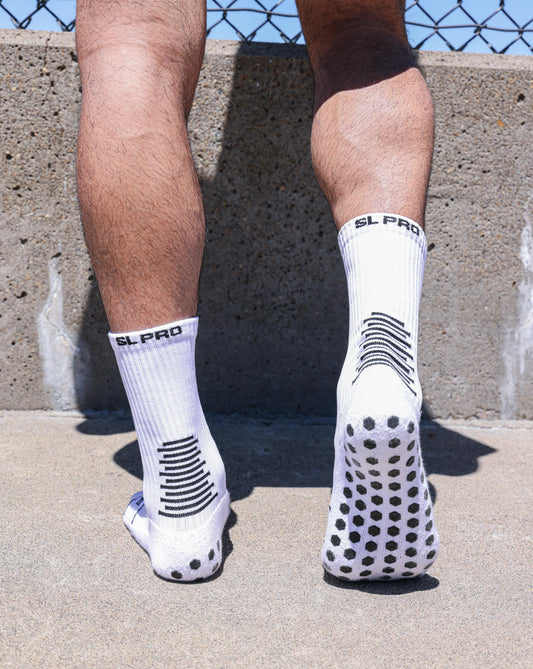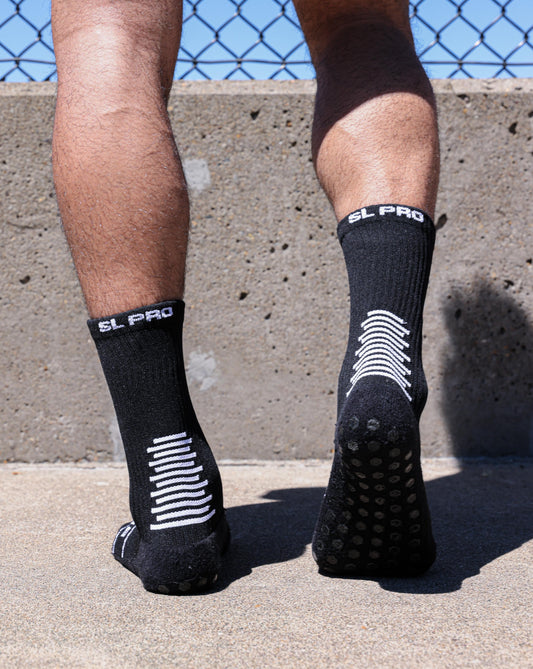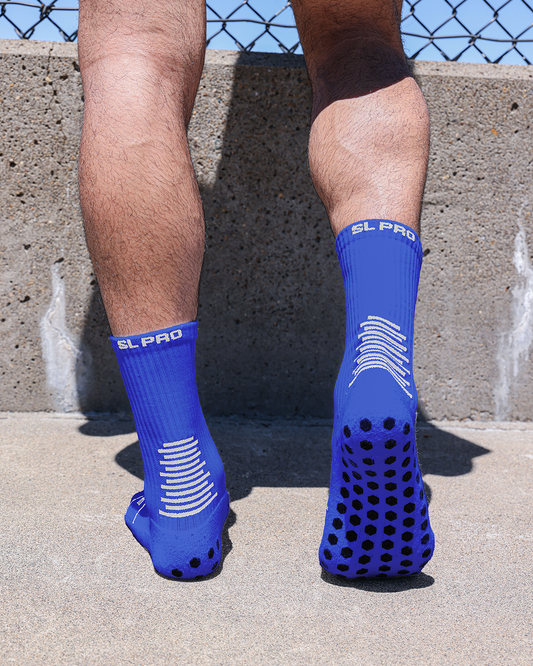Top 5 Soccer Product Trends in 2025: What Players Are Buying (and Why)
Soccer is evolving fast, and not just on the field. The gear that players wear, train with, and swear by is undergoing a serious upgrade in 2025. From pro academies to Sunday league legends, players are demanding more from their equipment: more performance, more style, and more meaning.
Whether you're a parent shopping for your youth player, a coach keeping your team dialed in, or a baller looking for that extra edge, these are the top 5 soccer product trends shaping the game right now.
Let’s break it down.
1. Grip Socks Are Now a Non-Negotiable
Gone are the days of slipping around inside your boots mid-match. Grip socks have gone from a nice-to-have to a must-have, and it’s not just pros using them anymore. Whether you're training on turf, playing indoors, or hitting match day hard, grip socks are becoming a staple in every serious player’s bag.
Why Players Love Them:
- Traction: Rubberized grips lock your foot inside the boot for better cuts, sprints, and stability.
- Blister Prevention: No more bunching or sliding = fewer hot spots.
-
Confidence Boost: Players feel connected to the pitch, like an extension of their feet.
Brands like Sunday League are leading the charge, blending high-performance grip with community impact (we donate a pair of socks for every SL PRO sold). It’s a perfect mix of function and purpose.
Pro Tip: Look for grip socks with mid-calf compression and breathable mesh zones, comfort and performance should go hand-in-hand.
2. Laceless Boots & Second-Skin Fits
One of the biggest shifts in recent years? Laceless soccer cleats that offer a snug, glove-like fit. If it sounds futuristic, it is. These boots are designed to mold to your foot like a second skin, providing maximum ball control without the pressure points traditional laces can create.
Top Features in 2025 Boots:
- Knit uppers for a sock-like fit
- Grip zones across the instep for better touch and passing
-
Lightweight plates for explosive speed and agility
Nike, Adidas, and Puma are all rolling out new generations of boots with refined fit tech, including carbon fiber springplates and adjustable lockdown systems.
Laceless boots aren’t just a style statement, they’re all about performance without distractions.
3. Smart Training Tools Are Changing the Game
Training solo doesn’t mean training alone anymore. Thanks to tech-enhanced gear like smart balls, app-connected cones, and reactive rebounders, players can now track progress in real time.
Popular Tools in 2025:
- Smart Balls like DribbleUp or Balln teach technique with live feedback.
- Skill Tracking Apps analyze footwork, shooting accuracy, and dribbling speed.
-
Wearable GPS Vests give insights into sprint distances, top speeds, and recovery times.
Youth players especially love the gamified training experience, think: leveling up your weak foot like you would in FIFA. Coaches and parents get performance data they can use to tailor development.
Smart training gear is no longer reserved for elite academies. It’s accessible, affordable, and, let’s face it, kind of addictive.
4. Eco-Friendly Gear Isn’t Optional Anymore
Soccer’s green revolution is officially here. In 2025, players care about more than just performance—they want their gear to match their values. That means materials that are recycled, vegan, or biodegradable, and brands that walk the talk on sustainability.
What’s Trending:
- Kits made from recycled ocean plastic
- Boots using plant-based leather alternatives
-
Packaging that’s plastic-free or compostable
Brands like Adidas (with their Parley line) and Puma are setting the standard, but we’re also seeing independent soccer startups focusing entirely on eco-conscious innovation.
And it’s not just marketing. More schools, clubs, and leagues are encouraging sustainable gear choices as part of their environmental commitments.
Bottom line: Performance and planet can coexist—and players are demanding both.
5. Cutting Socks to Prevent Cramping and Pressure
If you've ever noticed many pros cut holes in the calves of their match day socks, there's a reason for it, and it's more than a fashion statement. In 2025, more players are cutting holes in their match socks and pairing them with grip socks underneath.
Why It’s a Growing Trend:
-
Improved Circulation: Match-issued socks are often too tight or bulky, which can restrict blood flow and lead to cramping.
-
Better Fit: Cutting the socks allows players to customize the compression level of the calf while using performance grip socks for the foot.
-
No Slip, No Slide: Grip socks lock in the foot, while cut-off sleeves keep uniforms compliant.
This trend started with players like Danny Rose cutting his England socks in the 2018 World Cup, but now even youth players are catching on. Some clubs and brands are even designing socks intended to be cut, or offering pre-split kits that make the combo seamless. Step forward the SL FLEX, designed with a breathable mesh backing to increase blood flow, and prevent cramping.
Note: Always check with your coach or league to make sure modified socks meet uniform requirements.
Final Whistle: The Game Has Changed
From laceless boots to smart tech to socks that give back, soccer gear in 2025 is more personal, powerful, and purposeful than ever before. Whether you're chasing a scholarship, grinding through training, or showing out in your Sunday league, your gear can help you play better, train smarter, and show up with confidence.
Want to stay ahead of the curve? Follow brands that are pushing innovation, support companies that give back, and don’t be afraid to let your style and story shine on the pitch.
And if you haven’t tried grip socks yet... this is your sign. Trust us.
⚡ Stay plugged in.
Subscribe to our blog for more updates on the latest gear, pro-level training tips, and soccer culture drops you won’t want to miss.





